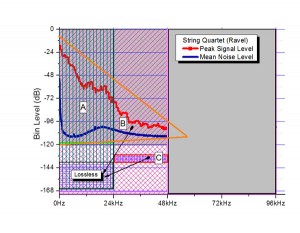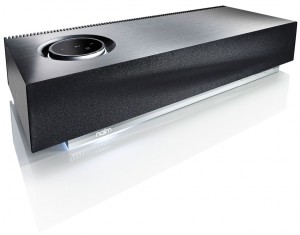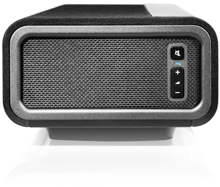Tidal just announced another 5 countries on their list of supported locations. Tidal is now available in these countries: USA, UK, Canada, Ireland, Luxembourg, Netherlands, Finland, Belgium, Italy, Singapore, South Africa, Denmark, Czech Republic and Slovakia.
media|STREAMERS
The market for media hubs is difficult to navigate – I try to chart some waters here
Category Archives: Lossless
We Need A QA OR An FAQ On MQA ASAP
 When Meridian went public with their MQA last year, nobody appeared to grasp the concept. Most just went “Wow” and said it lifted the soundstage and brought more brilliance to the sound vectors; better than lossless, even. Just below my otherwise allsensing radar, John Atkinson of Stereophile conjured up a brilliant little article that describes MQA in as much detail as anyone could possibly need, save those who need to implement the darn thing. So without further ado, here is a link to the hero of the day, who actually manages to explain MQA
When Meridian went public with their MQA last year, nobody appeared to grasp the concept. Most just went “Wow” and said it lifted the soundstage and brought more brilliance to the sound vectors; better than lossless, even. Just below my otherwise allsensing radar, John Atkinson of Stereophile conjured up a brilliant little article that describes MQA in as much detail as anyone could possibly need, save those who need to implement the darn thing. So without further ado, here is a link to the hero of the day, who actually manages to explain MQA losslessly more or less verbatim off of Bob Stuarts notes, without resorting to those dreaded black arts…
Tidal Deal All ‘Rapped Up
Swedish streaming company Aspiro, mostly known for their WiMP service are closing the deal with rapper Jay-Z. Following this deal, Jay-Z will own not only WiMP but more importantly also Tidal, the lossless streaming service just now trying to get a good grip on the hi-fi digital market. Jay-Z isn’t likely to change that but he will undoubtedly make lossless streaming a more commonly known technology and thus make this deal a good thing for the rest of us.
Naim Mu-So In The Lottery
![]()
![]()
![]()
![]()
![]()
 Naim have put a Naim Mu-So up for draws among customers who purchase a Hi-resolution digital album from their music shop. The Mu-So is Naim’s take on a wireless, monolithic speaker to compete with products such as B&W Zeppelin. Inline with Naim’s usual graphic style, the Mu-So has a visual punch unlike most other products in its genre. It streams everything up to 24-bit/192kHz Flac on a wired connection and plays it back at 75W per channel. Unusual among its peers it supports multi-room streaming with more Mu-Sos connected and is controlled by either an iOS or Android device or via the [equally] unusually rudimentary remote that comes with the package.
Naim have put a Naim Mu-So up for draws among customers who purchase a Hi-resolution digital album from their music shop. The Mu-So is Naim’s take on a wireless, monolithic speaker to compete with products such as B&W Zeppelin. Inline with Naim’s usual graphic style, the Mu-So has a visual punch unlike most other products in its genre. It streams everything up to 24-bit/192kHz Flac on a wired connection and plays it back at 75W per channel. Unusual among its peers it supports multi-room streaming with more Mu-Sos connected and is controlled by either an iOS or Android device or via the [equally] unusually rudimentary remote that comes with the package.
Audio Streaming Tidal Wave
Streaming services such as Spotify and WiMP are becoming as ubiquitous as Dr. Martens at a 1980’s punk concert. Unfortunately the audio quality is often not far from that either; the boots. When Swedish Aspiro, who are the powers behind WiMP, announced Tidal, a new streaming service for audiophiles, it was not without a certain anticipation and definitely not without a certain skepticism from audio boffins. In September and October they touched down in USA, UK and Canada, and with limited access in a number of other countries. Likely a judicial matter. Judging from their web page, they are now getting ready to take on mainland Europe as well. “Can I get it now, or must I hesitate?” to quote one song, “First we take Manhattan…” to quote another.
Tidal is available on major platforms, Android, iOS, Windows and Mac, and integrates with Squeezebox, Sonos, Linn and Simple Audio. Highest streaming quality is Flac at 1411kpbs, which amounts to 16bit/44.1KHz. Not hi-res but definitely a major leap in online audio.
Norwegian Bits Are Just Purer
![]()
![]()
![]()
![]()
![]()
Norwegian high-end dominatrices Electrocompaniet, have entered the stage and now offer digital purity for the discriminating audiophile. The ECM2 is a no-frills streamer that plays from a multitude of sources, from low-fi internet services to hi-res digital masters on your network. What stands this device apart in the world of inch-thick aluminium fronts, is the EMC2’s ability to stream video in HD. And not just that; it does it in 24bit/192KHz! Take a bite at that!
Digital attenuation allows you to stick it straight into the power amp and lets you sit in the couch and do you business straight from a phone of your choice [if it runs iOS or Android, that is] or from a DLNA controller.
Danish Newspaper Explains Sound Degradation
Danish newspaper Jyllands-Posten, today explains how the work flow from recording over mastering to distribution ands actual play-back, through poor choices and historical left-overs, introduces artifacts and degrades sound quality. For once it is someone who have actually done their homework and produced a tremendously readable article.
“One thing is notes that are missing, another thing entirely is unwanted notes sneaking in, not in harmony with the others.”
This is a cardinal statement in the article, showing that the author, Norwegian rocker Geir Gråbein Nordby, has heard the light, so to speak.
The article brought today, is in fact a month old article from Norwegian magazine Lyd og Bilde, but bringing this kind of article in a Hifi magazine is one thing, bringing it in a national newspaper is something else altogether. The original article does stand out a bit, though, including spectrograms of sound in different formats and resolutions.
Bluesound
![]()
![]()
![]()
![]()
![]()
 Canadian newcomers (and to some extent, former NAD dudes) Bluesound are going abroad with their jazzy looking 24-bit audio streaming system. A few weeks ago they appeared in Hifiklubben in Sweden and now they are available in Denmark as well. The system includes an optional server, ever so aptly named Vault, which can rip CDs in numerous formats, store them and stream them to the Bluesound players as well as act as a player itself. The satellite players come in three flavors: Node, Powernode and Pulse. The Node is a streaming client with analogue and digital outputs, natively supporting up to 192KHz sampling rates. The Powernode is akin to the Node adding a 90W class D amplifier to free it from a hifi system. The Pulse is a completely self contained system with 80W amp and speakers. In other words, a system not unlike the Sonos family; except in 24-bit resolution.
Canadian newcomers (and to some extent, former NAD dudes) Bluesound are going abroad with their jazzy looking 24-bit audio streaming system. A few weeks ago they appeared in Hifiklubben in Sweden and now they are available in Denmark as well. The system includes an optional server, ever so aptly named Vault, which can rip CDs in numerous formats, store them and stream them to the Bluesound players as well as act as a player itself. The satellite players come in three flavors: Node, Powernode and Pulse. The Node is a streaming client with analogue and digital outputs, natively supporting up to 192KHz sampling rates. The Powernode is akin to the Node adding a 90W class D amplifier to free it from a hifi system. The Pulse is a completely self contained system with 80W amp and speakers. In other words, a system not unlike the Sonos family; except in 24-bit resolution.
Control is done from a desktop computer or from the now ubiquitous smartphone or tablet. Presently only iOS and Android is supported.
Unlike Sonos, the Bluesound devices can access files from USB devices. It is unclear if each device can stream these auxiliary inputs autonomously, though.
Sonos Playbar
![]()
![]()
![]()
![]()
![]()
 Since some time last year, when the Sonos Playbar name showed up in FCC findings, rumors have speculated on whether it was a TV-playbar for surround sound or something more like a under-cupboard-music-bar. Then last week Sonos lifted the curtain to what indeed turned out to be a surround sound bar for the TV.
Since some time last year, when the Sonos Playbar name showed up in FCC findings, rumors have speculated on whether it was a TV-playbar for surround sound or something more like a under-cupboard-music-bar. Then last week Sonos lifted the curtain to what indeed turned out to be a surround sound bar for the TV.
The idea is pretty nigh hand, considering the ever present conundrum of wiring satellites and minimising the cable chaos in general. On its own, the Playbar gives you 2.1 system. Add a Sonos Sub and you automatically get 3.1 and add another 2 Play:3’s at the rear and you get full 5.1. Further than that it cannot go, but for most it should suffice. The other Sonos components cannot be paired with the Playbar for surround because they don’t have the sufficient wifi-specs for the low latency needed to sync with video.
Cambridge Audio Sonata NP30
![]()
![]()
![]()
![]()
![]()
![]()
 Cambridge Audio have been lurking in the streamer business for years but have been hard pressed show any appearance on the shop shelves. Now it looks as if they are finally getting to a shop near me with their recently announced Sonata NP30 Network Music Player. The apparatus is neatly designed yet slightly on the conservative side of the front panel fence.
Cambridge Audio have been lurking in the streamer business for years but have been hard pressed show any appearance on the shop shelves. Now it looks as if they are finally getting to a shop near me with their recently announced Sonata NP30 Network Music Player. The apparatus is neatly designed yet slightly on the conservative side of the front panel fence.
On the spec side the player offers 24-bit/96KHz playback of Flac and other formats through its Wolfson DAC, streaming from a variety of sources – wired and not.
As with everything else on this planet, the device can be remote controlled from the ever present iPad/iPod/iPhone.
Copyright © 2025. Powered by WordPress & Romangie Theme.